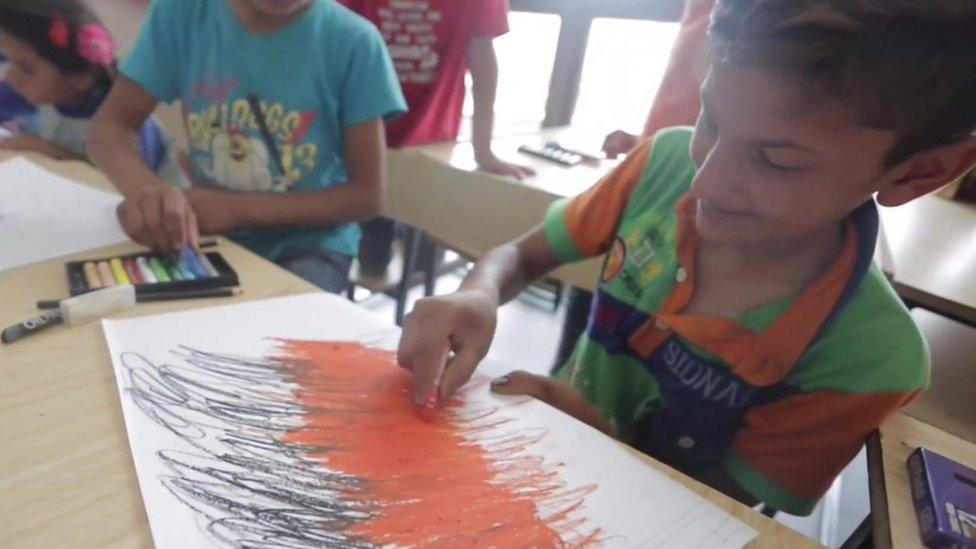Syria war: Child's eye drawings of death and displacement
- Published
"Maybe if we die we'll be able to play" - it's a sentiment echoed by many children caught up in the war in Syria, says Dr Mohammad Khalid Hamza.
His team of doctors and psychologists from the Syrian American Medical Society (Sams) have been working with children affected by the seven-year conflict. They and other humanitarian organisations have been collecting drawings made by the children.
This collection, drawn by children up to 14 years of age, shows how they see the war. We have withheld the names of some of the authors to protect their identity.
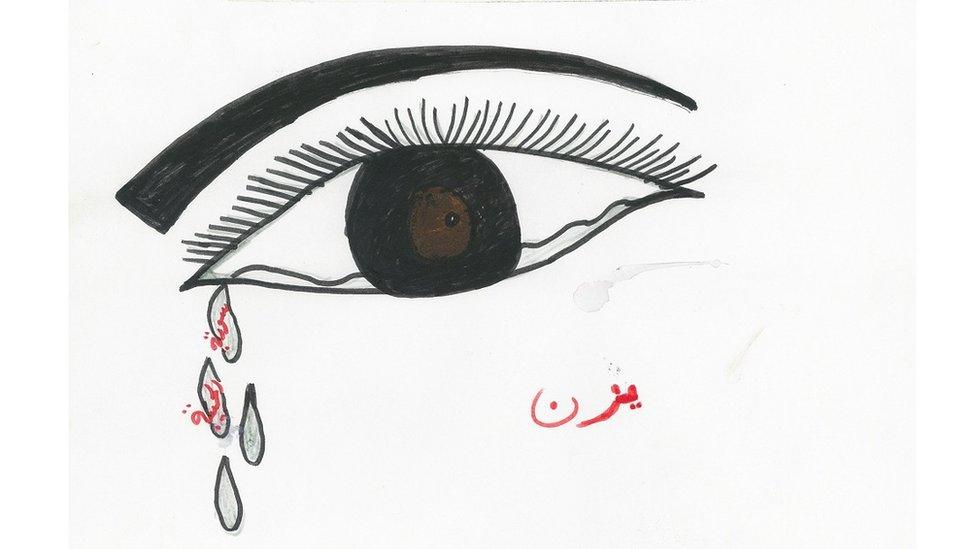
The words on the tear drops say: "Beautiful Syria"

The labels on this drawing say: "Assad's air force", "Red Crescent ambulance", "the children of Khan Sheikhoun" and "children's blood". UN experts believe the government was behind a chemical weapons attack on the rebel-held town of Khan Sheikhoun in April 2017 that killed dozens of people, including children
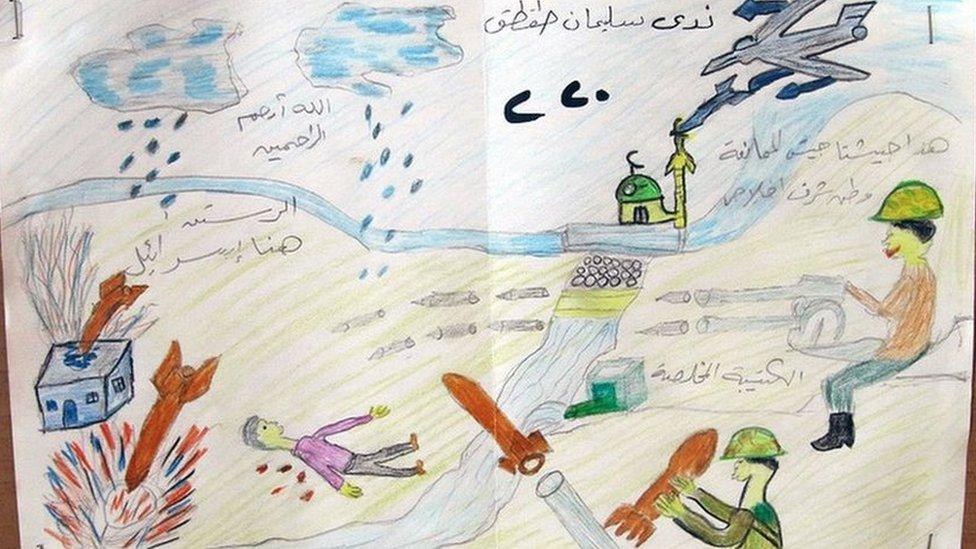
This picture appears to mock the Syrian army. Citing its slogan, the text above the soldier firing a machine-gun says: "This is our army of resistance. Homeland, honour and loyalty." The bullets, and mortars fired by another soldier, are depicting hitting the Syrian town of Rastan, but the text above it says: "This is Israel."
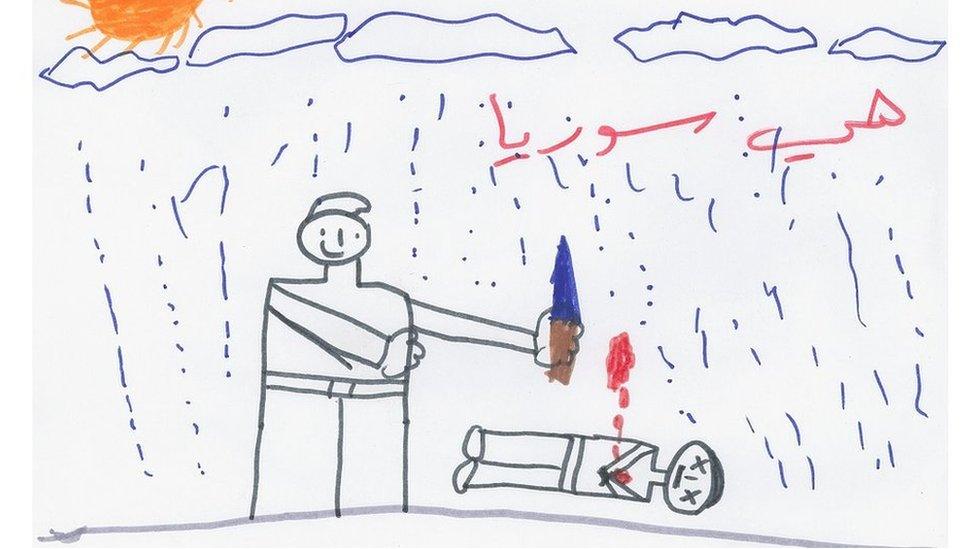
"This is Syria." Dr Hamza, neuropsychologist with the Syrian American Medical Society, says the children he has met have lost all hope

More than half of Syria's population has been displaced by the war, with at least 5.6 million fleeing abroad. Despite the many dangers of trying to cross the Mediterranean Sea in inadequate vessels run by people smugglers, hundreds of thousands of Syrian refugees have sought asylum in Europe
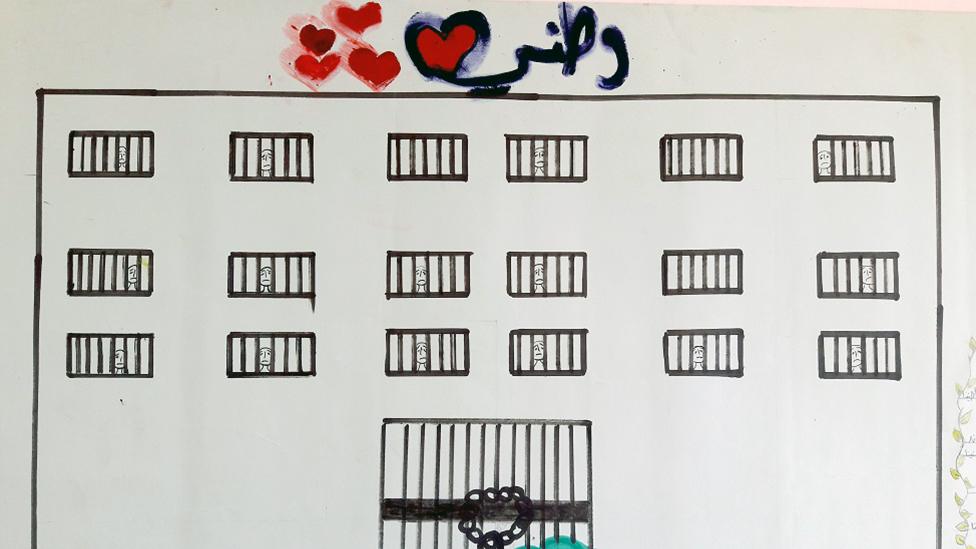
"My homeland." More than 118,000 Syrians have been detained or disappeared since 2011, the vast majority by government forces, according to the Syrian Network for Human Rights, a monitoring group
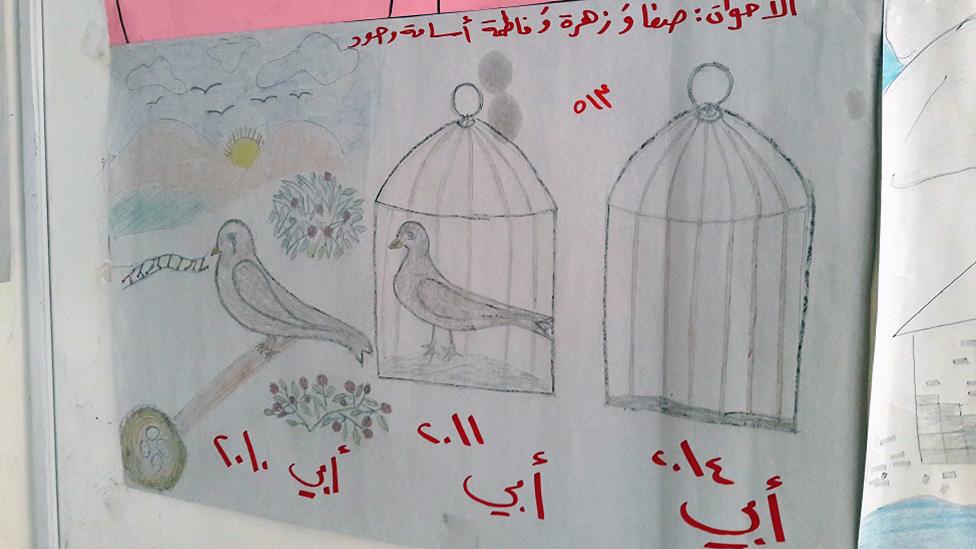
The top line reads (from right to left): "Siblings: Safa, Zahra, Fatima, Osama, Joud." The bottom line (from left to right) says: "My father in 2010", "My father in 2011", "My father in 2014"
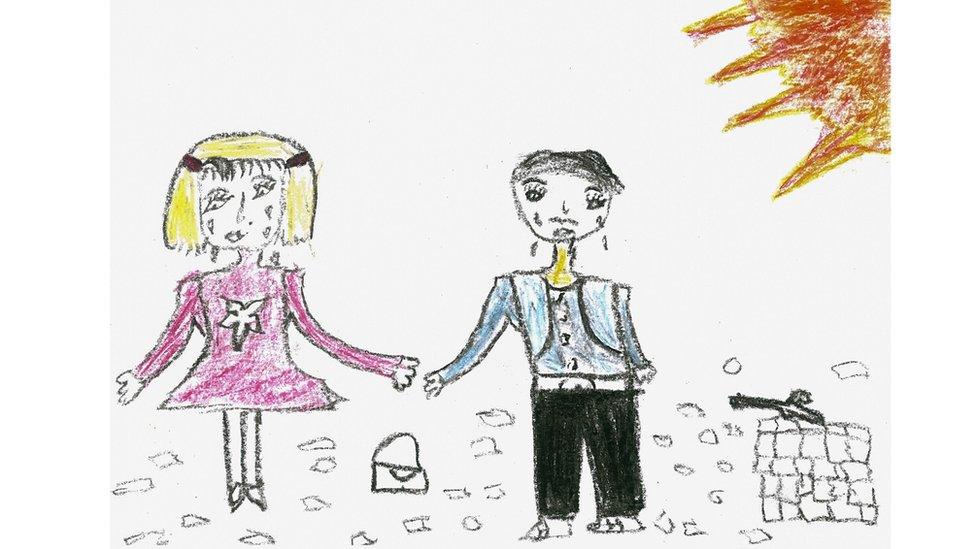
Myassar, 14: "I drew myself and my sister crying when my father left us almost two years ago. We don't know anything about him. This is my saddest memory."
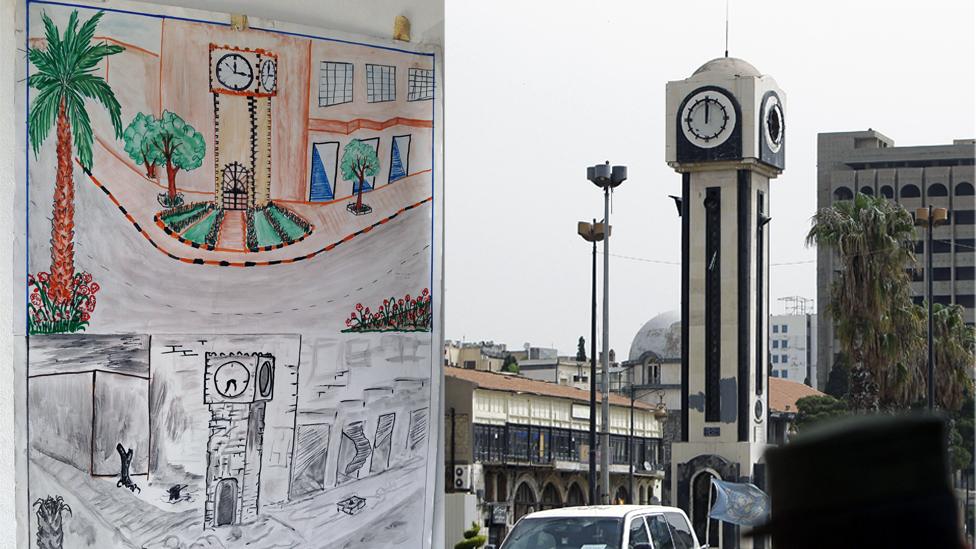
This drawing appears to depict the clock tower in a central square in Homs. Syria's third largest city was once dubbed the "capital of the revolution" against President Bashar al-Assad. It was devastated by three years of fierce fighting between government and rebel forces

"And their night will then begin to fade"
This drawing quotes the start of a poem by the famous Tunisian poet Abu al-Qasim al-Shabbi, The Will for Life. It is widely taught in schools throughout the Arabic-speaking world and became one of the rallying cries of the "Arab Spring" uprisings across the region.
The first verse reads:
If, one day, a people desires to live, then fate will answer their call.
And their night will then begin to fade, and their chains - break and fall.
(Poem translated by Elliott Colla)
Images provided by The Syrian American Medical Society, Save the Children and Unicef
- Published14 July 2017
